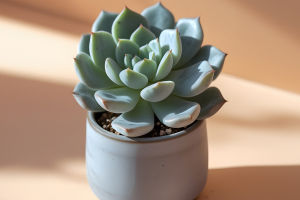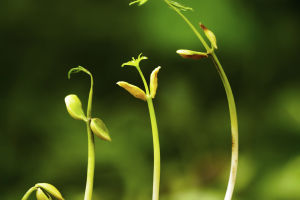Have you ever wondered why some plants only bloom at night? While we're accustomed to flowers opening up during the day, a surprising number of species wait until the sun sets to reveal their beauty.
It's not a random occurrence; plants have fascinating reasons for their nocturnal blooming habits. In this article, we'll explore why some flowers prefer to bloom at night and the unique adaptations that make this phenomenon possible.
Plants have been evolving for millions of years to adapt to their environments, and their timing is often perfectly aligned with their needs. So, let's dive into the science behind night-blooming flowers and why they do what they do!
The Science Behind Night Blooms
Why would plants choose to bloom at night when there's no sunlight to aid in photosynthesis? The answer lies in nature's complex web of survival strategies. Night-blooming plants often have special adaptations that help them thrive in their specific ecosystems.
For starters, many of these plants are pollinated by nocturnal creatures, such as moths, bats, and night-flying insects. These creatures are most active in the evening or at night, so blooming during this time ensures that the plants have the best chance of successful pollination. Unlike daytime pollinators like bees, which are attracted to bright, colorful flowers, nocturnal pollinators are drawn to plants that have strong scents or pale-colored flowers that are easier to spot in the dark.
Adaptations for Nighttime Blooming
Night-blooming plants are equipped with unique features that allow them to function well in low light conditions. Here are some of the adaptations that help them flourish in the nighttime environment:
• Fragrance: Many night-blooming plants release strong, sweet fragrances to attract nocturnal pollinators. This scent acts as a signal, guiding pollinators like moths or bats to the flowers.
• Color: While daytime flowers tend to be bright and colorful, night-blooming flowers often have pale or white blooms. These light colors are more visible in the dark and make it easier for pollinators to find them.
• Temperature and Humidity: The cooler temperatures and higher humidity at night also play a role in nocturnal blooming. These conditions can help preserve the delicate structure of the flowers and make them more attractive to pollinators that are adapted to nighttime temperatures.
Examples of Fascinating Night-Blooming Plants
Now that we know why some plants bloom at night, let's take a look at some of the most fascinating examples of these nocturnal beauties. These flowers not only have unique blooming patterns, but they also bring an added layer of mystery and wonder to gardens and natural spaces.
• Moonflower (Ipomoea alba): This beautiful white flower opens up in the evening, emitting a sweet fragrance that attracts moths. The moonflower is often associated with romantic nights and is a favorite for evening gardens.
• Night-Blooming Cereus (Selenicereus grandiflorus): Known as the "Queen of the Night," this cactus blooms only once a year, typically at night, and its flowers last for just a few hours. Despite their short-lived beauty, these flowers are large, fragrant, and a true spectacle to witness.
• Evening Primrose (Oenothera biennis): This yellow flower blooms in the late afternoon or evening, releasing a pleasant fragrance that attracts moths. It's a common plant found in gardens and fields, and its ability to bloom quickly at night makes it a delightful sight.
• Tuberose (Polianthes tuberosa): With its heady, sweet fragrance, the tuberose blooms in the evening and continues into the night. This flower is commonly used in perfumes due to its potent scent.
• Datura (Datura spp.): Known for its striking, funnel-shaped flowers, the datura opens in the evening and can remain open for up to 24 hours. This plant is famous for its intoxicating fragrance, which is designed to attract night-flying pollinators like moths and bats.
The Role of Night Blooms in the Ecosystem
Night-blooming plants play a crucial role in their ecosystems. By blooming at night, they cater to the needs of nocturnal pollinators, helping to sustain these species and their habitats. Many of these pollinators are essential for the survival of other plants, creating a balanced system in nature. Furthermore, night-blooming plants often help reduce light pollution by providing natural light sources that attract creatures without adding to the environmental burden.
Additionally, the timing of these blooms ensures that the plants can avoid competition with daytime flowers, which may attract more pollinators but also face higher risks of being eaten by herbivores during the day. The night shift is a clever strategy that allows these plants to flourish in an environment that otherwise might be too harsh for them.
Why Should We Appreciate Night Blooms?
So, why should we appreciate these night-blooming wonders? They provide us with a glimpse into the incredible complexity of nature and remind us that there's always more to discover. These flowers symbolize the beauty of adaptation and resilience, showcasing how life evolves to meet the needs of the environment.
If you've ever had the privilege of watching a moonflower unfurl its petals under the cover of darkness or inhaling the heady scent of a tuberose, you know how magical the experience can be. It's a reminder that nature's secrets are often hidden in plain sight, just waiting to be uncovered.
Conclusion: Nature's Hidden Nightlife
The world of night-blooming plants is a truly fascinating one, filled with intriguing strategies and remarkable adaptations. Whether you're a gardener looking to add some nighttime blooms to your collection or simply curious about the wonders of nature, there's always something magical about plants that bloom only at night.
Next time you walk through your garden at dusk or venture out for a late-night stroll, take a moment to appreciate these hidden wonders of the plant world. Have you ever had the chance to witness a night-blooming flower in action? Let us know your experiences or thoughts in the comments below!
Happy exploring, and may your nights be filled with the beauty of blooming flowers!


